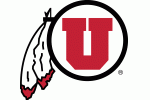These are a few excerpts and notes from what is a pretty long story.
Bears and Giants worked out their draft trade that morning.
That became a reality when Fields fell, the Giants got on the clock, and both teams called in to the league office to confirm that they had traded picks.
There was still more to do. Laine called the trade into the NFL. The Giants did the same. The NFL provided confirmation, and the Bears were on the clock.
Pace turned to Nagy: “We’re getting Justin Fields.”
Nagy screamed out of happiness and excitement. Pace remembered hearing a swear word or two. Chicago’s brain trust shared fist bumps and bro hugs. It was a party.
“The moment just feels surreal,” Pace said. “It’s out of body.”
Champ Kelly, the Bears’ assistant director of player personnel, turned the draft “card” into the league from his computer. Bobby Macedo, Chicago’s scouting coordinator, got the new face of the franchise on the phone and handed it to Nagy.
It was 8:39 p.m. in the draft room, and Justin Fields was a Chicago Bear. In a conversation with The Athletic, Pace explained how a dream scenario became his team’s reality.
After the season, Pace wrote a three-columned list of quarterbacks on his giant dry-erase board in his office: Trade possibilities; Free agent targets; Draft prospects.
Pace told Nagy he thought they had about a 5 percent chance of being able to get one of the top quarterbacks in the draft. Nagy was like, **** that, we're going to make it happen.
“That’s what I love about him. He’s always optimistic that somehow maybe there’s a way.”
Dalton was the only free agent quarterback the Bears talked to. Pace saw it as the perfect fit.
Later, while approaching the draft:
The draft was next. When the first wave of free agency passed, Pace printed the draft order. He started circling teams that could potentially select a quarterback. He had to do it again after March 26, the day the 49ers traded up from No. 12 to No. 3 in a blockbuster deal.
“I remember sitting in here circling all the teams that could potentially want to acquire a quarterback,” Pace said. “It was a lot this year.”
Ahead of the draft, the Bears ZOOMed with 175 prospects and conducted 120 in-person interviews at the Senior Bowl.
Bears had in-persons with Justin Fields, Trey Lance and Mac Jones.
In all, 11 Bears staffers filed reports on Fields: Pace, Nagy, Lazor, DeFilippo, Lucas, Kelly and Sadowski, along with scouts Chris Prescott, Jeff Shiver, Scott Hamel and Brendan Rehor. “What was cool about it was the consensus and unanimous opinion on a player,” Pace said. “It’s hard to find that. And this is one where the bandwidth of grades and the consensus on these grades was one of the tightest of any player in the draft, from all of our coaches to every single scout.
“We have 11 reports on Justin Fields, and they all basically have him in the same area.”
The Bears charted out trade scenarios for every single pick in the first round, even the first overall pick, and what it might take to move to those positions.
“We sit there in my office, Joey, Matt and I, and we just stare at that thing,” Pace said. “And we just talk hypothetically, ‘What if this happens? Would you give this? What if they said this?’ We do that for weeks.”
The Bears anticipated Trevor Lawrence and Zach Wilson going first and second overall to the Jaguars and Jets, respectively, so the draft started with
the 49ers’ quarterback selection at No. 3. Pace’s pre-draft work with Laine determined that trading up with the Falcons for the No. 4 selection would be too costly.
“The sweet spot to realistically get one of these quarterbacks, we thought, was going to be between eight and 12,” Pace said.
But Pace wanted to be careful. It was far too early for the Bears to call the teams with those picks (the Panthers, Broncos, Cowboys, Giants and Eagles). With the intense focus on quarterbacks, particularly in this draft, Pace hid his cards.
“Obviously we know that (other teams) know that the Bears can potentially be in the quarterback market,” Pace said. “But we held off on serious calls to teams in that sweet-spot range until Thursday morning, the day of the draft."
The Broncos getting Teddy Bridgewater and the Panthers getting Sam Darnold----The Bears saw those two moves as key to realizing they might be able to realistically pull something off in the draft to move up and get a QB.
Their approach to the draft was separated into four parts, according to Pace:
- Trade up into the “sweet spot” for a quarterback.
- “Go up a little from 20 if there’s somebody there that’s kind of surprised us, that shocks us.”
- Stay put at No. 20 and make the pick.
- Trade back.
Pace waited until Draft Day at 8:30 a.m. to start calling around to teams.
The Bears had 10 people in their draft room, and they didn't let them in until an hour and a half before the draft.
After the Lions picked Penei Sewell, they entered the Bears' "sweet spot" of where they felt good about being able to trade up for their quarterback.
When the Eagles moved up to #10, Pace thought it might be to draft a quarterback. He called both the Eagles and the Giants to see what the Eagles were doing at 10 (I don't know why, but I find this hilarious.) The story doesn't say whether they told him.
In any case, then the Eagles chose the Alabama receiver, and Pace got back on the phone with the Giants to tell them to finalize the deal they had already worked out that morning.










